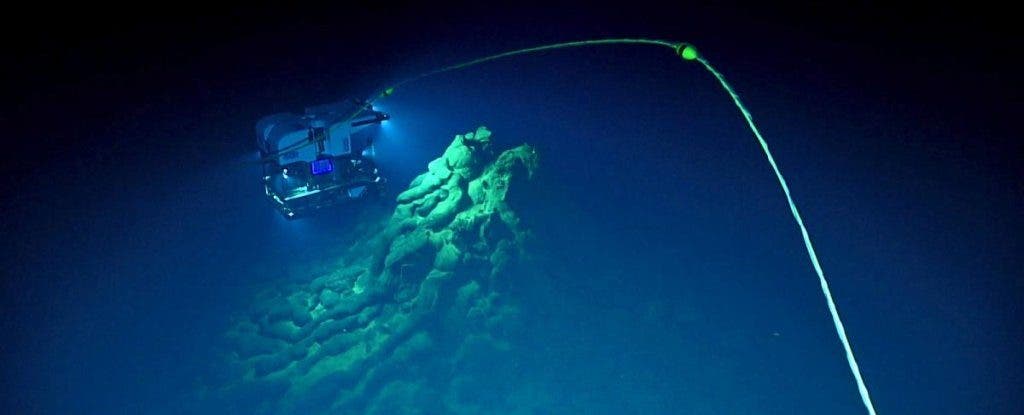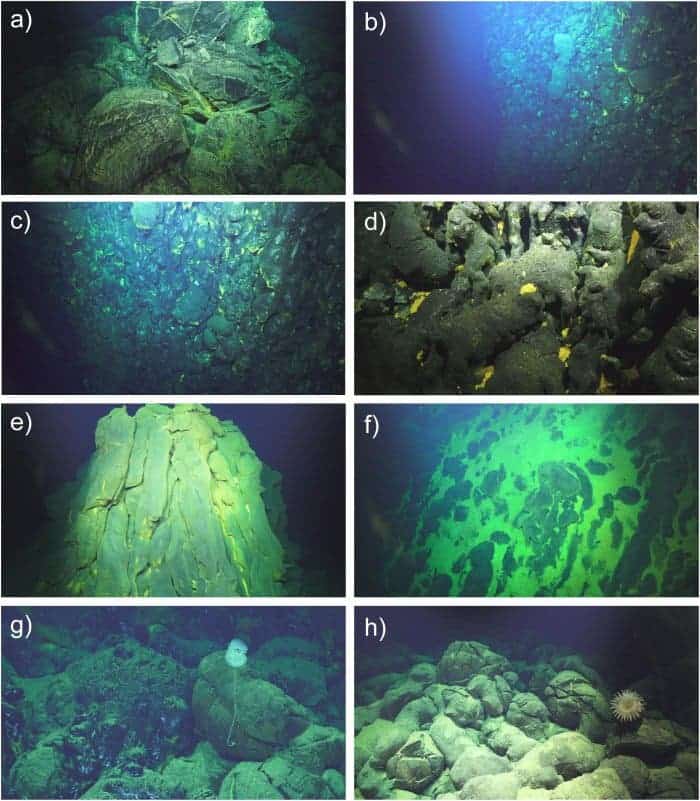Researchers found the deepest known volcanic eruption — right on the cusp of the Mariana Trough.

Nestled in a vast field of volcanic glass on the lip of the Mariana Trough at a depth of 4,050-4,450 meters (2.51 to 2.76 miles), researchers from the National Oceanic and Atmospheric Administration (NOAA) and the Oregon State University (OSU) have found the deepest volcano known to man.
The volcano experienced a massive eruption sometime in 2015, they write, creating the 7.3 kilometer-(4.5 mile-)long field of glass.
At the bottom of the sea
The Mariana Trough is a back-arc basin created by the active volcanoes running along the lip of the Mariana Trench. As it sits on the edge of a subduction zone (where one tectonic plate sinks under another), the Trough sees a lot of volcanic activity. However, it’s usually far beyond our sights.
We know that most of the world’s volcanic activity actually takes place in the ocean, but most of it goes undetected and unseen,” said OSU marine geologist and paper lead author Bill Chadwick.
“Undersea quakes associated with volcanism are usually small, and most of the instrumentation is far away on land. Many of these areas are deep and don’t leave any clues on the surface. That makes submarine eruptions very elusive.”
Such eruptions are so hard to study that we weren’t able to capture one on camera until 2009, less than a decade ago. Only about 40 submarine lava flows have been detected in total.
The eruption in the current paper was first found in December 2015, by the Woods Hole Oceanographic Institute’s autonomous underwater vehicle Sentry. At that time, the glass flows were brand new and pristine — there were no plants growing on them, and no sediments from which any could sprout. Hydrothermal vents were releasing a milky fluid, which indicated that the lava flow was still warm.
The team returned to the site in April and December of 2016 with remotely-operated underwater vehicles. These were NOAA’s Deep Discoverer and Schmidt Ocean Institute’s SuBastian, which allowed the researchers a much greater degree of freedom in exploring the eruption site. The hydrothermal system was in rapid decline by this point, the team notes, which suggests that the eruption likely occurred just a few short months before the initial discovery.
“Typically after an eruption, there is heat released and venting for a few years and organisms will colonise the vents, creating a new ecosystem,” Chadwick explains.
“But after a while, the system cools down and the mobile organisms will leave. There was still some venting, but it had obviously greatly declined.”

Image credits Chadwick et al., 2018m Frontiers.
We might have missed the main event, but the site is still a treasure trove of data for researchers. Apart from being the deepest, this is also the ‘freshest’ underwater eruption we’ve found so far. The team used this opportunity to see how quickly life colonizes such vents. By April 2016, species such as shrimp and lobsters — which are commonly seen living around hydrothermal vents — had started moving in at the site. Less mobile species such as anemones and sponges, however, were yet to make an appearance.
Undersea volcanoes can help inform us about how terrestrial volcanoes work and how they impact ocean chemistry, which can significantly affect local ecosystems,” Chadwick said. “It’s a special learning opportunity when we’re able to find them.”
The paper “A Recent Volcanic Eruption Discovered on the Central Mariana Back-Arc Spreading Center” has been published in the journal Frontiers in Earth Science.






